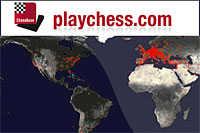The top finishers receive points according to their result, which is then used to qualify them for the final at the end. The players can play as many or as few stages as they want. Accumulating points for every result they post, and increasing their chances to play in the main event.
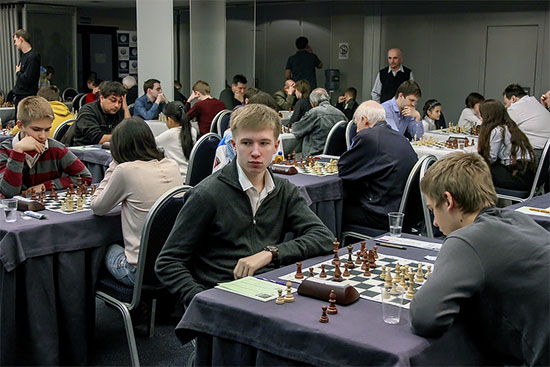
Though an important part of the professional circuit, it is also a proving ground for juniors
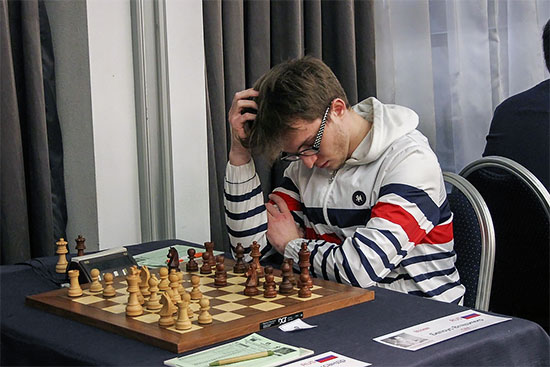
Vladimir Belous had a solid event, scoring about what was expected, and only suffering one
loss, to top-seed Riazantsev

Oleg Korneev (2591) had a blistering start with 4.0/4, but could not keep it up and after a
loss to Fedoseev in round six, finished with draw. His 6.0/9 was still good for a 2671 performance.
Eighty-two players showed up at the starting line, with twenty grandmasters no less. At the top, rated over 2600, were Alexander Riazantsev (2684), Denis Khismatullin (2673), Vladimir Fedoseev (2668), Dmitry Kokarev (2645), Sergey Volkov (2618), and Aleksey Goganov (2615).
Among the top seeds, Alexander Riazantsev had a solid tournament by his own standards, finishing on 6.5/9 with a 2699 performance, while Denis Khismatullin had a rocky event including a loss to the 12-year-old junior Andrei Esipenko.

Eventually it came down to 19-year-old Vladimir Fedoseev (left) and Aleksandr Shimanov (right).
tied with the same score int he final round, Fedoseev won his game against Artyom Timofeev, while
Shimanov could only draw and took second.

A guest of the tournament, Boris Gelfand came

He enjoyed the lectures with the juniors as a participant

One of them explains to Boris the subtleties he missed
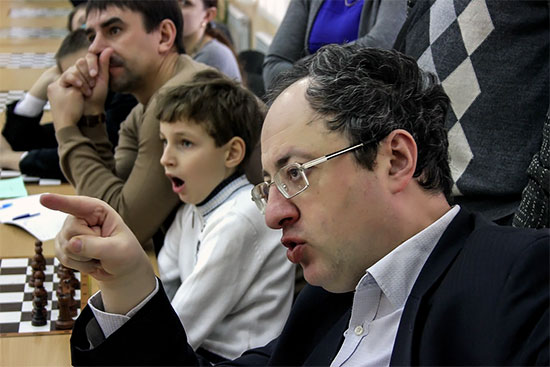
"You missed that after Nxg5 it is mate in 23", Gelfand points out.

The presence of the former World Championship challenger served as an inspiration to all

Being still a junior at age 19, Vladimir Fedoseev also took the top Junior prize. Next to him
are 12-year-old Andrey Esipenko, and 14-year-old Alexey Sarana.
Here is a small selection of tactics from the event:
Gevorgyan, D. - Korneev, O.

Black's pieces and pawns are primed for the attack. What is the first
blow? Black to play and win.
Khismatullin, D. - Korneev, O
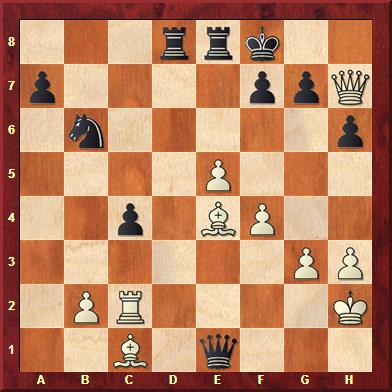
White has put together a great attack and has just played Qh7+
and Kf8. How does he continue? White to play and win.
Khismatullin, D. - Korneev, O
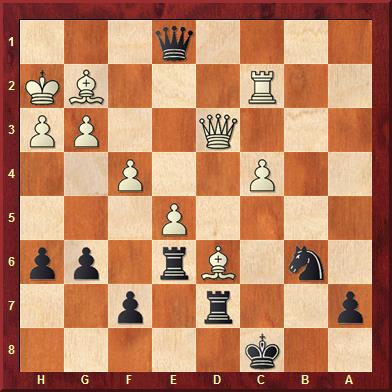
Yes, the names above are the same. After a blunder, White is now
vulnerable to a winning counter blow. Black to play and win.
Final standings
Click for complete standings
Solutions to diagrams:
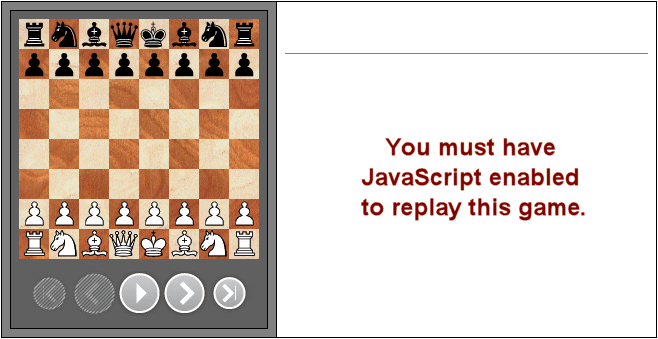
[Event "Vladimir Dvorkovich Mem"] [Site "Taganrog RUS"] [Date "2015.01.19"] [Round "2.6"] [White "Gevorgyan, D."] [Black "Korneev, O."] [Result "0-1"] [ECO "D30"] [WhiteElo "2395"] [BlackElo "2591"] [SetUp "1"] [FEN "r4rk1/pb1nq1b1/7p/3P2pP/1pp1Pp2/5N2/PPBQNP2/2KR3R b - - 0 22"] [PlyCount "21"] [EventDate "2015.01.18"] [EventRounds "9"] [EventCountry "RUS"] [SourceDate "2015.01.19"] 22... c3 $1 23. Qe1 (23. Qd3 b3 $3 {Smashing through.} 24. Bxb3 Nc5 25. Qc4 Nxb3+ 26. axb3 cxb2+ 27. Kb1 Rac8 28. Qa4 Rf6 $1 $19 {with the idea of Ra6.}) ( {Obviously not} 23. bxc3 bxc3 24. Nxc3 Qa3+ 25. Kb1 Bxc3 26. Qc1 Qb4+ 27. Bb3 Qxe4+ {and it all falls down.}) 23... cxb2+ 24. Kb1 b3 25. Bxb3 Qxe4+ 26. Bc2 Qxf3 27. Rd3 Qe4 28. Re3 Qxd5 29. Bb3 fxe3 30. Qd1 Nb6 31. Bxd5+ Bxd5 32. fxe3 Be4+ 0-1 [Event "Vladimir Dvorkovich Mem"] [Site "Taganrog RUS"] [Date "2015.01.21"] [Round "4.3"] [White "Khismatullin, D."] [Black "Korneev, O."] [Result "1-0"] [ECO "A07"] [WhiteElo "2673"] [BlackElo "2591"] [SetUp "1"] [FEN "3rrk2/p4ppQ/1n5p/4P3/2p1BP2/6PP/1PR4K/2B1q3 w - - 0 37"] [PlyCount "7"] [EventDate "2015.01.18"] [EventRounds "9"] [EventCountry "RUS"] [SourceDate "2015.01.26"] 37. b3 $1 {This innocuous looking move serves to open the way for the bishop, a deadly blow.} Ke7 38. Ba3+ Kd7 39. Bd6 Kc8 40. Qf5+ {And White is winning.} 0-1 [Event "Vladimir Dvorkovich Mem"] [Site "Taganrog RUS"] [Date "2015.01.21"] [Round "4.3"] [White "Khismatullin, D."] [Black "Korneev, O."] [Result "0-1"] [ECO "A07"] [WhiteElo "2673"] [BlackElo "2591"] [SetUp "1"] [FEN "2k5/p2r1p2/1n1Br1pp/4P3/2P2P2/3Q2PP/2R3BK/4q3 b - - 0 43"] [PlyCount "2"] [EventDate "2015.01.18"] [EventRounds "9"] [EventCountry "RUS"] [SourceDate "2015.01.26"] 43... Rdxd6 $1 44. Qa3 ({White has no defense since} 44. exd6 {loses to} Re3 45. Qf1 Qxg3+ 46. Kh1 Re1) 0-1
































